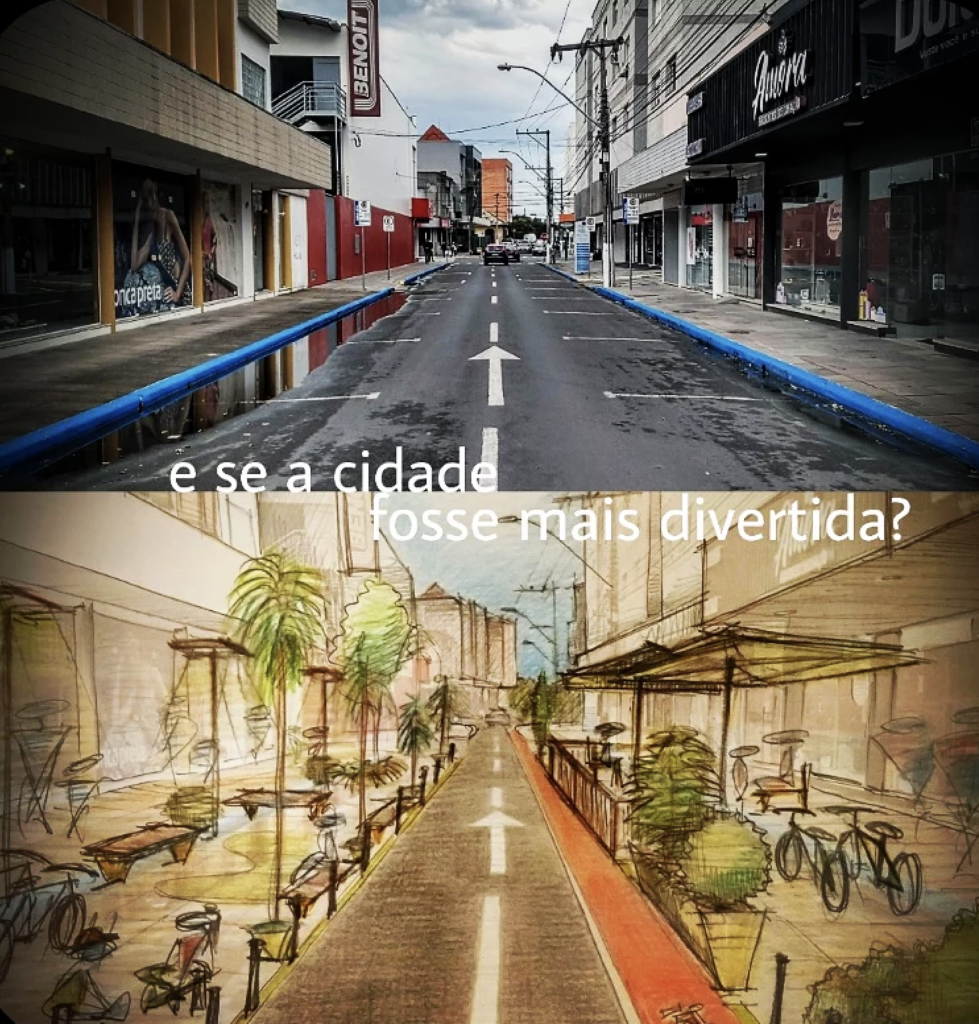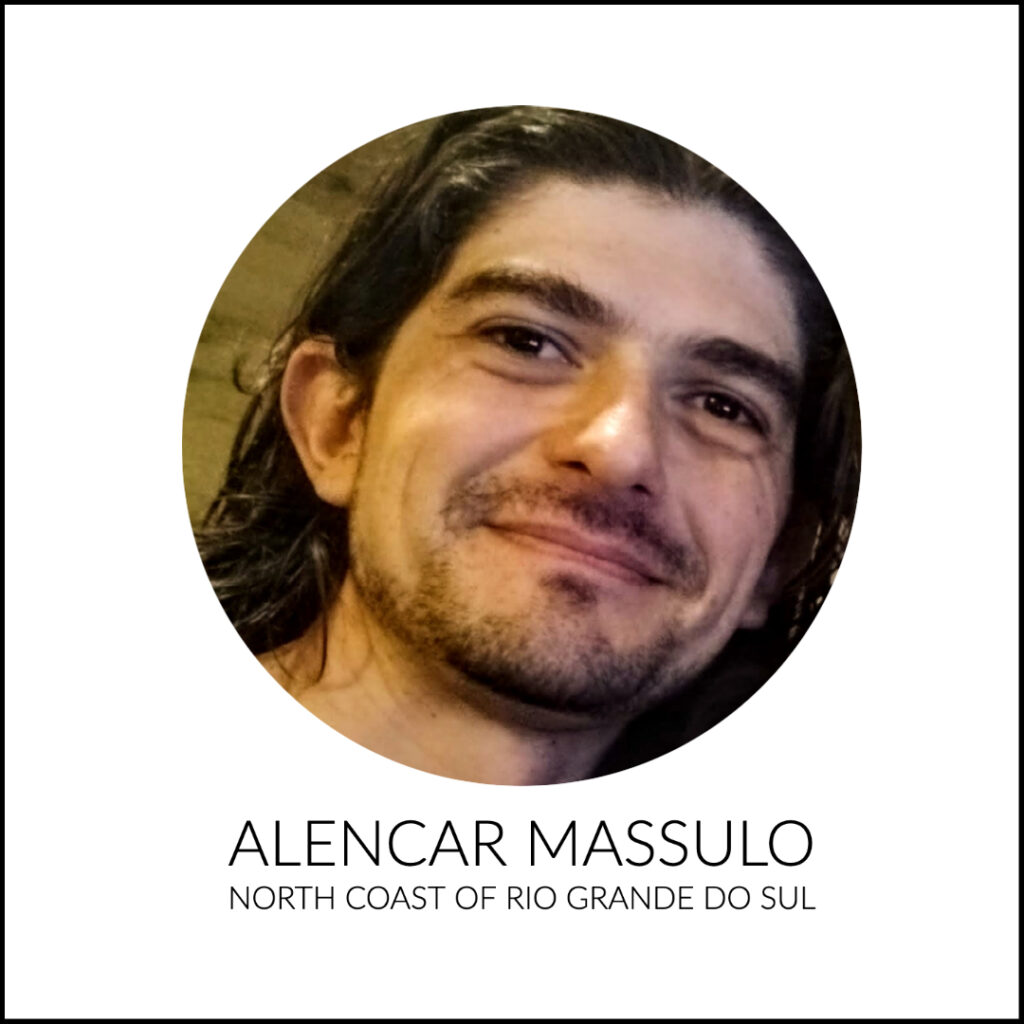As a Correspondent for the North Coast of Rio Grande do Sul, I represent a region that houses two cities with similar urban characteristics: poor public transport, the car as the main form of mobility, few bike paths & sidewalks & public spaces that are generally not friendly. Small, inexpensive actions can significantly change the walkability of these cities & it is these actions that I try to channel into the energy of new & purposeful urban projects.
Alencar Massulo

Panni School children’s drawings. The children were invited to participate in the development of the new school project and made texts and illustrations of what they imagine the new school to be like.
Introducing our North Coast of Rio Grande do Sul, Brazil Correspondent Alencar Massulo!
Here at Pedestrian Space we recently launched a Global Walkability Correspondents Network, as a way to build solidarity among walkability advocates around the world and continue to create media on sustainable mobility and urbanism.
We are so happy and fortunate to have Alencar Massulo on board as our North Coast of Rio Grande do Sul, Brazil Correspondent. Read on for some of his thoughts as we launch this network.

WHO
I am Alencar Massulo, an architect and urban planner in Santo Antônio da Patrulha and region, in the south of Brazil. My work seeks to include children’s perspectives and opinions in architecture and urbanism projects, as well as in city planning. In the same line of thought as Professor Francesco Tonucci, I believe that a child-friendly city is a better city for all people.

A quick and simple drawing when I noticed the street without a car, the day the rotating parking started in Osório, Brazil. Do we really need that much space for cars? What if the street was more fun?- Alencar Massulo, LinkedIn post
WHERE
I was born in Porto Alegre, the capital of the State of Rio Grande do Sul, Brazil. I live in Santo Antônio da Patrulha and also work in Osório – two cities with less than 50 thousand inhabitants. As a Correspondent for the North Coast of Rio Grande do Sul, I represent a region that houses these two cities and many others with similar urban characteristics: poor public transport, the car as the main form of mobility, few bike paths, and, as a general rule, sidewalks and public spaces that are not friendly. On the other hand, small and inexpensive actions can significantly change the walkability of these cities – and it is these actions that I try to channel into the energy of new and purposeful urban projects.

My work seeks to include children’s perspectives and opinions in architecture and urbanism projects, as well as in city planning. In the same line of thought as Professor Francesco Tonucci, I believe that a child-friendly city is a better city for all people.
Alencar Massulo

WHY WALKABILITY?
I am interested in walkability because, first of all, it is a quality of urban space that allows children to play in the street again. It is also a subject that causes changes and depends on a network of actions in different areas of city planning, such as physical and mental health, the local economy, the environment, social relations and many others.

My daughter Helena, 8 years old, asked to draw what she imagined would be a good Panni School. Colors, a tree, and on the playground, a child in a wheelchair.

The Municipality of Santo Antônio da Patrulha bought an area next to the Pequeno Aprendiz School to be the new schoolyard. The children, when visiting the place, recorded videos with opinions on the best way to occupy that space. They are contributing to the urban project that is in the elaboration phase.

Alencar Massulo is an Architect and Urban Planner specializing in planning cities and collective spaces. He works with the methodology of the “La Città dei Bambini” project to listen to and include children in urban design decisions. He is the father of Helena, Nina and Theo and he learns from them every day.
Read North Coast of Rio Grande do Sul, Brazil Correspondent Alencar’s content here
Learn more about the Global Walkability Correspondents Network here

